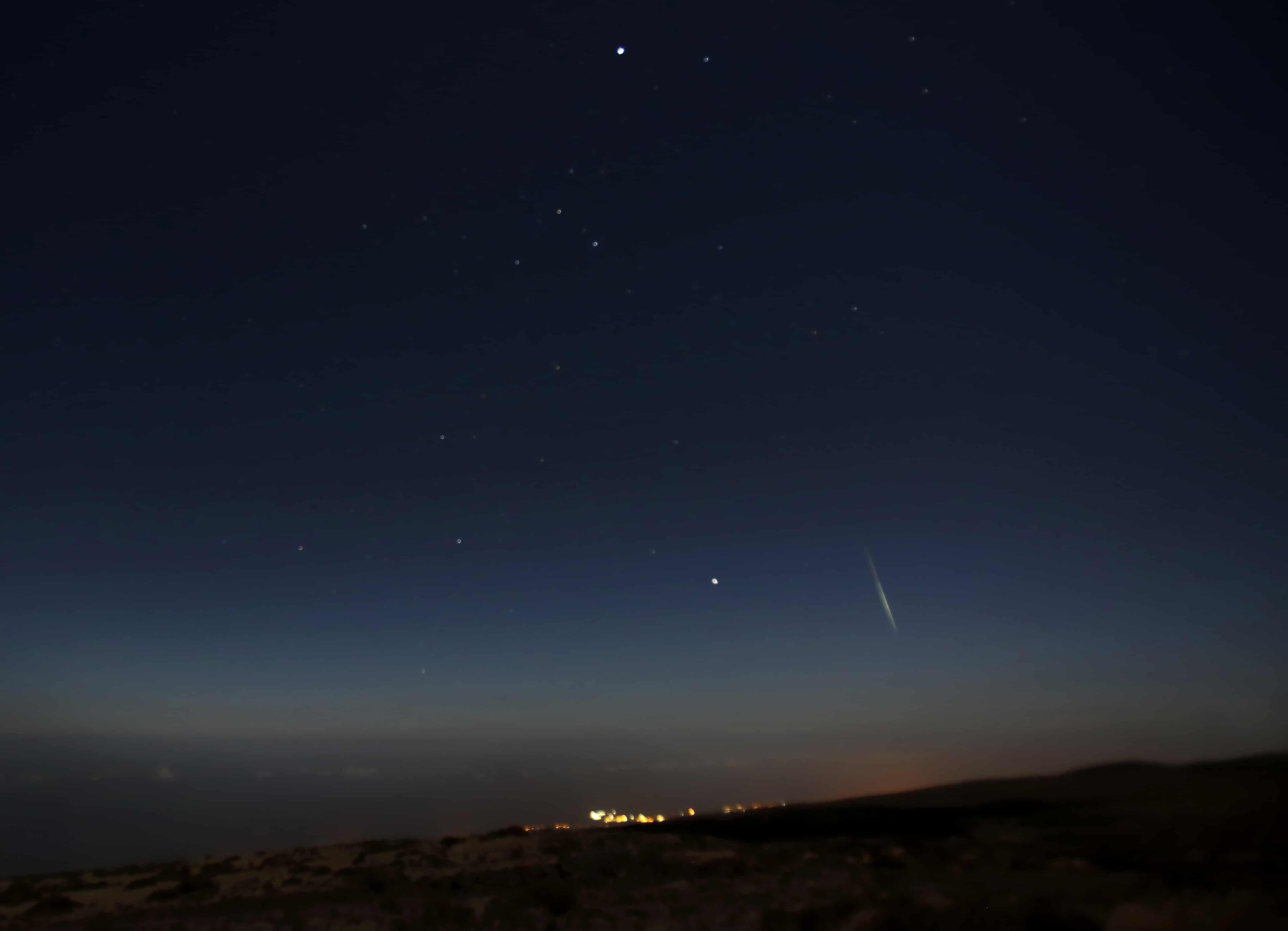The upcoming year will kick off magically: 2023 will offer a magnificent meteor shower on January 3 and 4. They’re called Quadrantids and are considered one of the best annual meteor showers.
Most shooting star showers peak over a couple of days but Quadrantids, on the other hand, have only a few hours of high intensity. During that period, 60 to 200 meteors per hour can be seen under perfect conditions.
“The Quadrantids are the first of the large annual meteor showers and the only one named after an ancient constellation, Quadrans Muralis, which occupied part of the present-day region of Boyero (Bootes). It is surrounded by Hercules, the tail of the Big Dipper, and Draco, and they will be seen anywhere in the sky,” pointed out CIENTEC.
Bright fireball meteors can be observed with larger bursts of light and color that can persist longer than an average meteor streak. Meteorites come from remnants of comet particles and asteroid fragments crumbling in space. On the other hand, fireballs originate from particles of bigger material.
As comets and asteroids revolve around the Sun, the dust they emit gradually spreads out in an inert trail over their orbits. Each year, the fragments collide with the Earth’s atmosphere as the Earth passes through this dusty, inert trail of debris.
Then, they disintegrate, creating streaks of fire and colors in the sky, referred to as meteor showers.
The best moment to watch this phenomenon in Costa Rica is the early morning of Wednesday, January 4.
“Quadrantids don’t leave bright trails, but they have some fireballs that can be interesting. They are much faster than the Geminids. On that day, the Moon goes to bed at almost 4 a.m., and I think that would be the best time to see them,” commented Alejandra León-Castellá, executive director of CIENTEC.
Meteor showers are usually best appreciated in absolute darkness, without city lights or street lighting.
“According to the International Network of Meteor Observers, in dark skies (away from artificial lights), about 25 meteors per hour will be seen at peak,” explained CIENTEC.
León-Castellá recommended going to the beach, mountains, hills, and other places outside the city.






